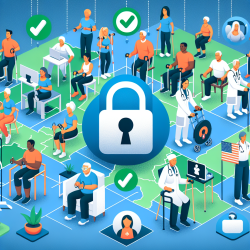In the rapidly evolving field of speech-language pathology, practitioners continually seek effective tools to enhance language assessment and intervention processes. The Clinical Evaluation of Language Fundamentals-Revised Clinical Assistant (CELF-R CA) software emerges as a significant resource in this endeavor. This blog post explores how the CELF-R CA can improve practitioners' skills, encourage further research, and ultimately enhance the quality of language intervention and assessment.
The CELF-R CA software is designed to assist clinicians in the administration and scoring of the CELF-R, a widely used tool for assessing language disorders in children and adolescents. By automating the scoring process, the software not only saves valuable time but also increases the accuracy of the results. This precision is crucial in diagnosing language disorders and developing targeted intervention strategies.
One of the key benefits of the CELF-R CA is its ability to provide instant feedback on a student's language abilities. This immediate insight allows clinicians to make informed decisions about intervention strategies without delay. Furthermore, the software's comprehensive reporting features offer detailed analyses of a student's performance, highlighting strengths and areas needing improvement. These reports can be invaluable in planning individualized education programs (IEPs) and tracking progress over time.
However, the CELF-R CA is not just a tool for speeding up the assessment process. It also serves as a catalyst for deeper exploration into the nuances of language disorders. By analyzing the detailed reports generated by the software, clinicians can identify patterns and trends that may not be apparent through traditional assessment methods. This analysis can lead to new hypotheses about the nature of language disorders, encouraging further research and exploration.
In addition to its practical applications, the CELF-R CA software also offers educational benefits. Clinicians, especially those in the early stages of their careers, can use the software as a learning tool. By working with the software, they can gain a deeper understanding of the CELF-R assessment process, familiarize themselves with common language disorders, and refine their diagnostic skills. This hands-on experience is invaluable in developing competent, confident practitioners who are well-equipped to meet the needs of their clients.
Despite its many advantages, the CELF-R CA software is not without its limitations. Access to technology, cost, and the need for training can be barriers to its widespread adoption. However, for those who can overcome these hurdles, the benefits of incorporating the CELF-R CA into their practice are clear. Not only does it enhance the efficiency and accuracy of language assessments, but it also provides a rich source of data for clinical research and professional development.
In conclusion, the CELF-R CA software represents a significant advancement in the field of speech-language pathology. By leveraging this technology, clinicians can improve their assessment and intervention strategies, contribute to the body of research on language disorders, and ultimately provide better outcomes for their clients. As the field continues to evolve, tools like the CELF-R CA will play a crucial role in shaping the future of language assessment and intervention.
To read the original research paper, please follow this link: Clinical Evaluation of Language Fundamentals-Revised Clinical Assistant (CELF-R CA).










